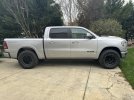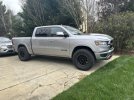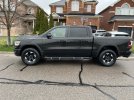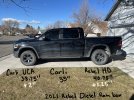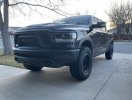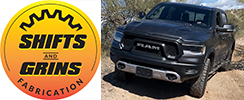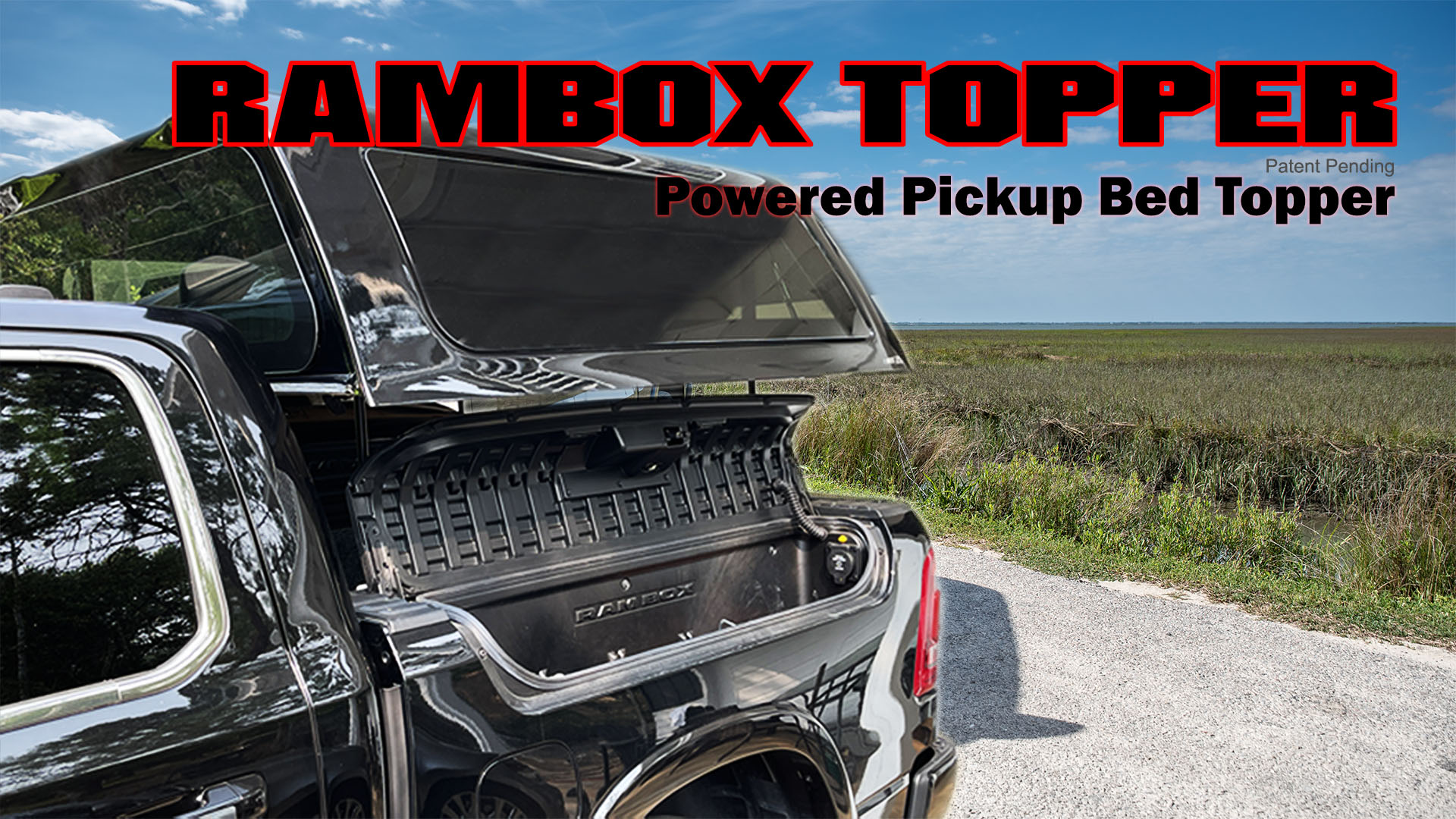5thGenRams Forums
You are using an out of date browser. It may not display this or other websites correctly.
You should upgrade or use an alternative browser.
You should upgrade or use an alternative browser.
Carli 2.0 commuter system
- Thread starter macaw6
- Start date
boogielander
Spends too much time on here
- Joined
- Jun 29, 2022
- Messages
- 3,486
- Reaction score
- 5,550
- Points
- 113
According to Carli's website:
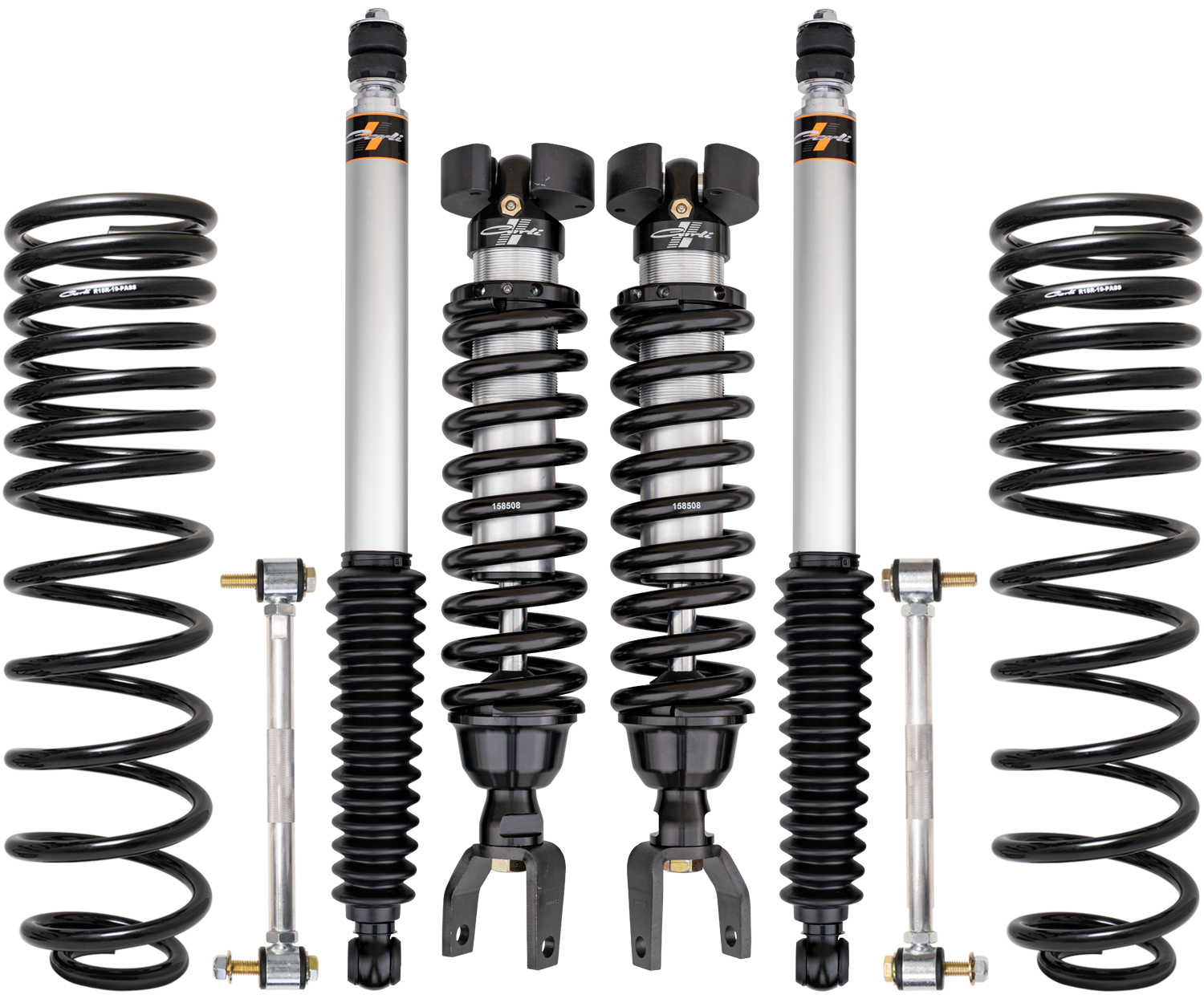
 carlisuspension.com
carlisuspension.com
I went with basically Fox 2.5 plus Carli's UCA, rear springs, rear end link. Ride is major improvement when compared to stock, and I have adjustability for on road dampening and off road dampening.

Commuter System
The Carli-SPEC Commuter for the 2019+ Ram 1500 is the first of it's kind within our 1500 offerings. The front coilover is a 2.5" Diameter, non reservoir. In our custom tuning process, we found the additional surface area of the 2.5" piston (vs. the 2.0" piston in our previous Fox offering)...
Hemi Front Lift | Rear Lift | Front Travel | Rear Travel | Shock Diameter | Tire Fitment |
|---|---|---|---|---|---|
1.5″ | 1″ | 8″ | 12″ | 2.0″ | 35″ x 12.5 |
I went with basically Fox 2.5 plus Carli's UCA, rear springs, rear end link. Ride is major improvement when compared to stock, and I have adjustability for on road dampening and off road dampening.
NCLife
Active Member
- Joined
- Jan 10, 2023
- Messages
- 59
- Reaction score
- 40
- Points
- 18
- Age
- 54
I have it on my Laramie if that’s of any value to you. I have read the only difference in the two OEM suspensions is the shocks. I assume it lifted it according to Carli's specs, but it was on the truck when I bought it, so I have no idea what the diff was after installation.
Attachments
Put the system on last week. Does not seem to have lifted the front at all and maybe 1/2" lift in the rear. The truck does not go offroad any further than My back yard so the amount of lift is not A problem for Me. I am not going to go wild on the tire size and did not really need any lift. I will Run the factory tires until fall and then plan on going with 285/65/18 K02s on TRX take off wheels, that will give A little more width but with no rubbing on the UCA and keep the tires under the fenders instead of sticking out slinging crap up the side of My truck. As far as the ride goes, it is an unbelievable difference. The truck now rides as well as A late model Ford raptor or A large luxury car.
Last edited:
mk2019ORP
Well-Known Member
- Joined
- Sep 4, 2019
- Messages
- 201
- Reaction score
- 72
- Points
- 28
- Age
- 41

I have this with Rebel HD springs on my Laramie as well. (500 pounds constant load) I agree that I did not get the advertised lift in the front, maybe half an inch or so over stock ORG. Got enough to clear 285/65/R20’s which is good enough for me. Only about 500 miles on the system so far so not fully broken in or settled, but so far, very happy with the ride quality.
lovegr8music
Member
- Joined
- Dec 16, 2019
- Messages
- 6
- Reaction score
- 13
- Points
- 3
- Age
- 52
DownNTexas
Member
- Joined
- Nov 19, 2023
- Messages
- 10
- Reaction score
- 2
- Points
- 3
- Age
- 44
This is the deal breaker for me. Plus, yeah.. the 35s fit but they look super stuffed. The Fox 2.5 at least claims 3" lift.. Back to square one.Wait so the carli 2.0 commuter system doesn't lift the truck at all?
Spidermonkey871
New Member
- Joined
- Dec 31, 2023
- Messages
- 1
- Reaction score
- 0
- Points
- 1
- Age
- 54
It lifts a regular 1500 4x4. Rebels are different. Everything you need to know is on Carli's website.This is the deal breaker for me. Plus, yeah.. the 35s fit but they look super stuffed. The Fox 2.5 at least claims 3" lift.. Back to square one.
DownNTexas
Member
- Joined
- Nov 19, 2023
- Messages
- 10
- Reaction score
- 2
- Points
- 3
- Age
- 44
Been through it many times. There's "regular 1500 4x4," then there are non-Rebel 4x4s with the Off Road Package that make them, suspension wise, measure out the same as the Rebel. My Built to Serve has the ORP, so I'd get Rebel numbers... and I'm after taller for the $$It lifts a regular 1500 4x4. Rebels are different. Everything you need to know is on Carli's website.
boogielander
Spends too much time on here
- Joined
- Jun 29, 2022
- Messages
- 3,486
- Reaction score
- 5,550
- Points
- 113
give it some time for it to settle and then measure again.I just installed this system on my truck and this is the lift measurements I got on my rebel
also it'd be more accurate if you measure on flat surface.
E.Hands
Well-Known Member
I always hear this about "time to settle" but what changes?give it some time for it to settle and then measure again.
also it'd be more accurate if you measure on flat surface.
Is it the new springs' "break-in" period?
And since I've opened this can-o-worms:
Springs are always referred to as "Lbs/Inch" but which inch? The first one from static with a particular load or the second, maybe the third? In compression or expansion?
PS - with excellent way in which El_PWR presented his data, I'm going to guess that while his pictures were taken on his driveway I bet that his measurements were taken on a flat surface.
Last edited:
How much time do you guys think like 10k miles? Also what psi you guys running on 35s?give it some time for it to settle and then measure again.
also it'd be more accurate if you measure on flat surface.
boogielander
Spends too much time on here
- Joined
- Jun 29, 2022
- Messages
- 3,486
- Reaction score
- 5,550
- Points
- 113
sometimes the weight of the truck will push the springs down more. i dont know why, and i don't know how. i just know it happens. not drastic change, but a small change.I always hear this about "time to settle" but what changes?
Is it the new springs' "break-in" period?
And since I've opened this can-o-worms:
Springs are always referred to as "Lbs/Inch" but which inch? The first one from static with a particular load or the second, maybe the third? In compression or expansion?
PS - with excellent way in which El_PWR presented his data, I'm going to guess that while his pictures were taken on his driveway I bet that his measurements were taken on a flat surface.
It's like when you jack up the front of the truck, then put it back down. It sits higher until you turn the steering wheels left and right and the springs compresses to "settle" a bit.
The inch in spring rates (lb/in) refers to the amount it of weight it takes to compress the spring an inch. It is an universal way of calculating spring rate and not vehicle or load specific. It doesn't change before or after the springs are settled. Say, for instance, for 600lb/ft spring rate, it takes 600lb to compress the spring 1in. If you stack 1200lb on it, it compresses 2". Spring rate is still at 600lb/in.
i mean, measurements taken on flat ground or on slanted driveway will not give you drastic difference, but it is a common practice in the industry to measure it on flat ground for maximum accuracy.
boogielander
Spends too much time on here
- Joined
- Jun 29, 2022
- Messages
- 3,486
- Reaction score
- 5,550
- Points
- 113
nah you don't need that many miles. Just a long lap around the block or even commute should do the trick. I was under the impression that you did it yourself at home that's why I made that comment. If you had it done at the shop then the springs should settle already between the drive from shop to home.How much time do you guys think like 10k miles? Also what psi you guys running on 35s?
I run 40 all around on Load Range F 12ply tires. It should be just fine for load range E 10 ply too. Do a chalk test for the optimal tire pressure for you.
E.Hands
Well-Known Member
The reason that your suspension sits higher after you had it off the ground is because it is bound up. When it was off of the ground, the suspension drooped. When you set it down the tires are trying to "spread out" due to the suspensions geometry. Just have a look at the tires side wall once it's back on the ground, before it is rolled out.sometimes the weight of the truck will push the springs down more. i dont know why, and i don't know how. i just know it happens. not drastic change, but a small change.
It's like when you jack up the front of the truck, then put it back down. It sits higher until you turn the steering wheels left and right and the springs compresses to "settle" a bit.
That's why every wheel alignment rack has "Alignment Plates" that can slide out in all directions, and allow the suspension to relax.
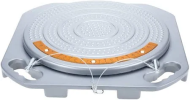
At home rolling the vehicle forward or backward just one tire revolution will allow that to settle out.
I feel that you already knew that, but I wanted to clarify for others because of the way it I interpreted your previous post.
I understand that this is just the way that springs are referred to as an industry standard but...The inch in spring rates (lb/in) refers to the amount it of weight it takes to compress the spring an inch. It is an universal way of calculating spring rate and not vehicle or load specific. It doesn't change before or after the springs are settled. Say, for instance, for 600lb/ft spring rate, it takes 600lb to compress the spring 1in. If you stack 1200lb on it, it compresses 2". Spring rate is still at 600lb/in.
Here is where I am confused:
If it took 600 Lbs. to compress the spring one inch, then surely it will take more than just another 600 Lbs. to compress the next inch. No?
And are we talking the about compressing the spring from a completely relaxed state? Like before it is installed?
Or are we talking about compressing it one inch from static ride height, whist it is supporting the weight of the vehicle?
I know all about "Progressively Wound" coils but I feel that even coils that are NOT progressively wound still have spring rates that are no where near linear when they compress and get closer to or farther from their point of coil bind (fully compressed-end of stroke).
I've heard of but never researched shock & spring dyno plots.
I know it's a thing but I fear getting over my head in the complexity.
Last edited:
FrostyGym
New Member
- Joined
- Apr 16, 2021
- Messages
- 4
- Reaction score
- 1
- Points
- 3
- Age
- 39
How does it ride?I just installed this system on my truck and this is the lift measurements I got on my rebel
boogielander
Spends too much time on here
- Joined
- Jun 29, 2022
- Messages
- 3,486
- Reaction score
- 5,550
- Points
- 113
yes i should've clarify it more clearly. i was at the end of my part time night shift and the next guy was coming in when I posted the comment. But you nailed it perfectly.The reason that your suspension sits higher after you had it off the ground is because it is bound up. When it was off of the ground, the suspension drooped. When you set it down the tires are trying to "spread out" due to the suspensions geometry. Just have a look at the tires side wall once it's back on the ground, before it is rolled out.
That's why every wheel alignment rack has "Alignment Plates" that can slide out in all directions, and allow the suspension to relax.
View attachment 180254
At home rolling the vehicle forward or backward just one tire revolution will allow that to settle out.
I feel that you already knew that, but I wanted to clarify for others because of the way it I interpreted your previous post.
I understand that this is just the way that springs are referred to as an industry standard but...
Here is where I am confused:
If it took 600 Lbs. to compress the spring one inch, then surely it will take more than just another 600 Lbs. to compress the next inch. No?
And are we talking the about compressing the spring from a completely relaxed state? Like before it is installed?
Or are we talking about compressing it one inch from static ride height, whist it is supporting the weight of the vehicle?
I know all about "Progressively Wound" coils but I feel that even coils that are NOT progressively wound still have spring rates that are no where near linear when they compress and get closer to or farther from their point of coil bind (fully compressed-end of stroke).
I've heard of but never researched shock & spring dyno plots.
I know it's a thing but I fear getting over my head in the complexity.Lol
So spring rate is constant. If it takes 600lb to compress one inch, it takes 1200lb to compress two inches (600+600). What you mentioned (different amount of weight to compress an in) involves variable spring rate designs.
I believe it is measured in a relaxed state, as after installation each vehicle is of different weight and once the springs are installed, they compress, so it wouldn't be a fair benchmark figure to be compared at.
lol you're probably right, but that's more on the engineering side of things that's way complicated lol. i'm more on the retail application side so you're treading into territories that I'm not familiar with and i'm fairly happy with the "off-the-shelf" options we have available so I never really dive into these knowledge.
Not sure if you've seen this already, but Crawlpedia - The Off-Road Encyclopedia has some interesting info!
Users who are viewing this thread
Total: 1 (members: 0, guests: 1)

